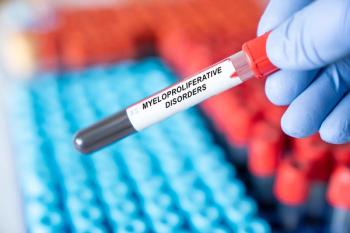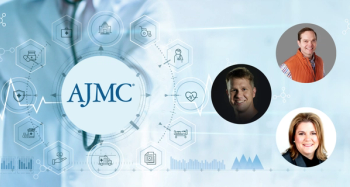
FDA Guidance to Remove One of the Largest Barriers to Biosimilar Development
Key Takeaways
- The FDA's draft guidance could streamline biosimilar approval by reducing the need for comparative efficacy studies, emphasizing analytical assessments instead.
- This approach may lower development costs and time, enhancing competition and reducing biologic prices, but challenges like the "biosimilar void" remain.
The FDA announced draft guidance to remove clinical efficacy studies for biosimilars and also issued the position that all biosimilars in the US should be interchangeable.
The US FDA has issued draft guidance that many health policy leaders and industry stakeholders say could dramatically streamline the regulatory pathway for biosimilars—accelerating their entry into the managed care market and unlocking meaningful cost savings for the US health care system.1
Titled
Shifting From Onerous Clinical Requirements to Modern Science
For years, development of complex biologic drugs—and their biosimilar counterparts—has been hampered by what critics describe as overly stringent, often redundant regulatory hurdles.2 The FDA’s new draft guidance directly addresses one of the most time- and resource-intensive steps: the CES.
In the new framework, the agency emphasizes that current analytical technologies offer sufficiently sensitive tools to characterize highly purified therapeutic proteins and, in many cases, can detect minor differences more precisely than a clinical trial.1 According to the draft, a well-conducted comparative analytical assessment (CAA) is often more sensitive than a CES, since CES outcomes can be confounded by dose selection, population heterogeneity, or trial design sensitivity.
Under this streamlined approach, if the CAA demonstrates that the proposed biosimilar is highly similar to its reference product—and is supported by a comprehensive human pharmacokinetic (PK) similarity study and immunogenicity assessment—then a CES may not be needed, provided 3 conditions are met:
- The 2 products are highly purified, derived from clonal cell lines, and analytically well characterized.
- For the reference product, the relationship between key quality attributes and clinical efficacy is generally understood and measurable in the CAA.
- A human PK similarity study is feasible and clinically meaningful.
By emphasizing analytical studies instead of routine clinical trials, the FDA signals its intent to reduce the cost (often estimated at $100 million to $300 million) and time (typically 6–9 years) required to bring biosimilars to market.3
Policymakers Back Competition
The draft guidance drew strong support from senior health policy voices. The Secretary of Health and Human Services described the previous regulatory system as burdened by “sky-high costs [and] endless red tape,” stating that the new guidance replaces “bureaucracy with science, monopolies with competition, and despair with hope.”3
FDA Commissioner Marty McCary, MD, similarly emphasized that regulatory barriers have prevented greater biosimilar entry into the US market and that expanding competition is essential to driving down biologic prices and improving patient access.
The Biosimilars Forum described the guidance as “momentous” for tackling America’s affordability crisis in prescription medicines.4 Executive director Juliana M. Reed highlighted that the guidance explicitly recognizes that routine CESs are not scientifically necessary in most cases.
During the press conference announcing the guidance, Kennedy said that biosimilar use has already generated more than $56 billion in savings and that the new regulatory framework could unlock $181 billion in additional savings over the next 5 years.3
The “Biosimilar Void”: Regulatory Momentum Meets Market Reality
Despite this encouraging policy shift, a deeper structural challenge remains—the so-called “biosimilar void.”
As reported by Samsung Bioepis, between 2025 and 2034, approximately 118 biologic molecules representing nearly $232 billion in combined US sales are expected to lose patent protection. Yet only about 10% of these biologics currently have biosimilars in active development, leaving roughly 90% of the market with no near-term competition.5
This void reflects a convergence of factors that have eroded confidence in biosimilar investment. Beyond the high costs of both development and prolonged patent litigation, manufacturers face concerns about:
- Return on investment for niche or rare-disease products. Companies are hesitant to commit substantial resources to biosimilars that target small patient populations, where revenue potential may not offset development and legal costs.6
- Manufacturing complexity. Many next-generation biologics involve intricate production processes—such as bispecific antibodies or cell-based therapies—that require specialized facilities and expertise.5
- Lengthy development timelines. Even with streamlined regulatory requirements, biosimilar programs can still take most of a decade to complete, delaying potential returns.
- Market uncertainty under the Inflation Reduction Act (IRA). Price negotiations and shifting reimbursement dynamics introduced by the IRA have created new disincentives for investment, particularly for products nearing potential Medicare negotiation windows.7
Together, these pressures have slowed pipeline growth, raising concerns that without additional reforms—such as addressing rebate structures, patent “thickets,” and PBM incentives—the US may not realize the full promise of biosimilar competition.
Implications for Managed Care and Patient Access
For managed care executives, payers, and provider systems, the FDA’s draft guidance represents a critical step toward faster, more cost-effective biosimilar entry. However, the benefits of these reforms could take years to materialize, underscoring that policy change alone will not close the biosimilar void.
They encouraged patients to “ask their doctors about biosimilars,” a call that highlights a disconnect between perception and reality. For many therapeutic areas, biosimilars still do not exist; for others—particularly in oncology—biosimilars are so widely adopted that patients may already be receiving them without realizing it.8 As a result, the immediate public impact of this guidance is likely to be modest, even as it lays the groundwork for long-term gains in affordability and access.
If development efficiencies are not paired with improved commercial viability, many biologics will continue to face little or no competition, and potential cost savings will remain unrealized. Stakeholders must now look beyond regulatory reform to focus on aligning incentives, ensuring manufacturing capacity, and reinforcing provider and patient education to build lasting confidence in biosimilars.
References
- Scientific considerations in demonstrating biosimilarity to a reference product: updated recommendations for assessing the need for comparative efficacy studies. FDA. October 29, 2025. Accessed October 29, 2025.
https://www.fda.gov/regulatory-information/search-fda-guidance-documents/scientific-considerations-demonstrating-biosimilarity-reference-product-updated-recommendations - Niazi SK. BioRationality: The FDA sets sights on removing clinical efficacy studies for biosimilars. The Center for Biosimilars®. October 29, 2025. Accessed October 29, 2025.
https://www.centerforbiosimilars.com/view/biorationality-the-fda-sets-sights-on-removing-clinical-efficacy-studies-for-biosimilars - Biosimilars reform. FDA. October 29, 2025. Accessed October 29, 2025.
https://www.hhs.gov/live/live-1/index.html#12163 - Biosimilars Forum applauds FDA and Commissioner Dr. Marty Makary for supporting safe, effective and lower-cost biosimilars. The Biosimilars Forum. October 29, 2025. Accessed October 29, 2025.
https://biosimilarsforum.org/2025/10/29/biosimilars-forum-applauds-fda-and-commissioner-dr-marty-makary-for-supporting-safe-effective-and-lower-cost-biosimilars/ - Jeremias S. The Biosimilar void: 90% of biologics coming off patent will lack biosimilars. The Center for Biosimilars. Published July 2024. Accessed October 29, 2025.
https://www.centerforbiosimilars.com/view/the-biosimilar-void-90-of-biologics-coming-off-patent-will-lack-biosimilars - Overcoming Economic, Noneconomic Barriers to Biosimilar Adoption in Oncology. The Center for Biosimilars. June 20, 2024. Accessed October 29, 2025.
https://www.centerforbiosimilars.com/view/overcoming-economic-noneconomic-barriers-to-biosimilar-adoption-in-oncology - Jeremias S. The Trump Administration’s drug price actions and why US prices are already sky-high. The Center for Biosimilars. May 17, 2025. Accessed October 29, 2025.
https://www.centerforbiosimilars.com/view/the-trump-administration-s-drug-price-actions-and-why-us-prices-are-already-sky-high - Santoro C. Biosimilar uptake lags in US despite potential cost savings. AJMC®. August 16, 2024. Accessed October 29, 2025.
https://www.ajmc.com/view/biosimilar-uptake-lags-in-us-despite-potential-cost-savings
Newsletter
Stay ahead of policy, cost, and value—subscribe to AJMC for expert insights at the intersection of clinical care and health economics.













































